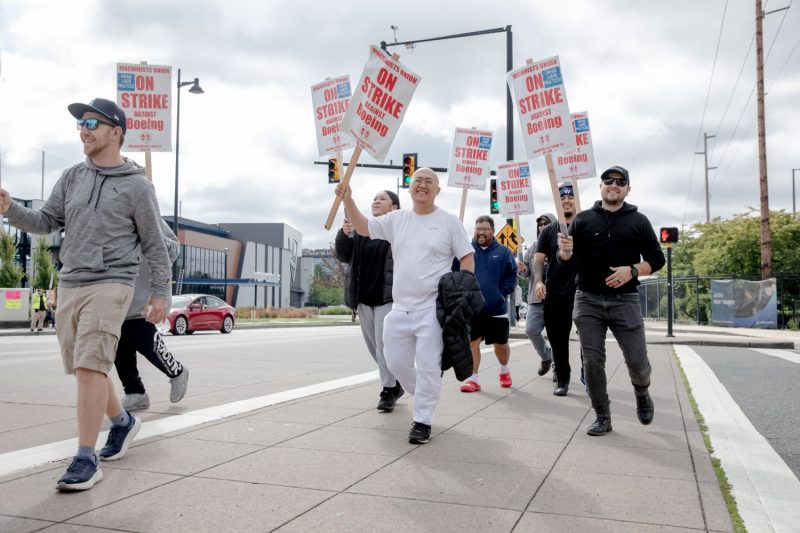Boeing Starts Furloughing Tens of Thousands of Employees Amid Machinist Strike
The aerospace giant Boeing, faced with ongoing challenges and setbacks, has recently implemented a significant workforce reduction strategy. In response to the machinist strike, Boeing has started the process of furloughing tens of thousands of its employees. This decision has sent shockwaves through the aviation industry and has raised concerns about the company’s future prospects and stability.
The ongoing machinist strike has greatly impacted Boeing’s operations, leading to disruptions in production and delays in the delivery of aircraft. The strike, which resulted from a breakdown in negotiations between Boeing and the International Association of Machinists and Aerospace Workers (IAM), has significantly strained the relationship between the company and its workforce. The lack of agreement on key issues such as wages, benefits, and working conditions has escalated tensions and has forced Boeing to take drastic cost-cutting measures.
The furloughs, which are expected to affect a substantial portion of Boeing’s workforce, come as a distressing development for the employees and their families. The uncertainty surrounding the duration of the furloughs and the potential long-term effects on job security have created a sense of unease and apprehension among the affected workers. Many employees are now facing financial challenges and are grappling with the possibility of an extended period of unemployment.
The impact of Boeing’s decision to furlough employees is not limited to the company’s workforce but also extends to its broader ecosystem of suppliers, partners, and stakeholders. The ripple effects of the furloughs are reverberating across the aviation industry, creating disruptions in the supply chain and affecting the overall stability of the market. The reduction in Boeing’s workforce may also lead to a slowdown in aircraft production and a decrease in the company’s capacity to meet customer demand.
In response to the challenges posed by the machinist strike and the need to adapt to shifting market conditions, Boeing must adopt a strategic approach to navigate the turbulent waters ahead. The company must prioritize effective communication and engagement with its workforce to address concerns and build a foundation of trust. By fostering a collaborative and transparent relationship with employees and unions, Boeing can work towards finding mutually beneficial solutions and resolving the current impasse.
Additionally, Boeing should explore alternative strategies to manage its workforce and operations more efficiently in the face of the ongoing challenges. This may involve diversifying its revenue streams, investing in innovation and technology, and exploring new business models to enhance its resilience and adaptability. By embracing a proactive and forward-thinking mindset, Boeing can position itself for long-term success and sustainability in a rapidly evolving industry landscape.
As Boeing grapples with the repercussions of the machinist strike and the furloughing of employees, it must remain steadfast in its commitment to its core values and mission. By staying true to its heritage of innovation, excellence, and dedication to safety, Boeing can overcome the current obstacles and emerge stronger and more resilient. The road ahead may be challenging, but with perseverance, determination, and a focus on collaboration and partnership, Boeing can navigate the storm and chart a course towards a brighter future.
In conclusion, the furloughing of tens of thousands of employees by Boeing in response to the machinist strike represents a critical juncture for the company and the aviation industry as a whole. The challenges and uncertainties facing Boeing require a strategic and proactive approach to navigate the turbulent waters ahead effectively. By prioritizing communication, engagement, and innovation, Boeing can weather the storm and emerge stronger and more resilient in the face of adversity.
